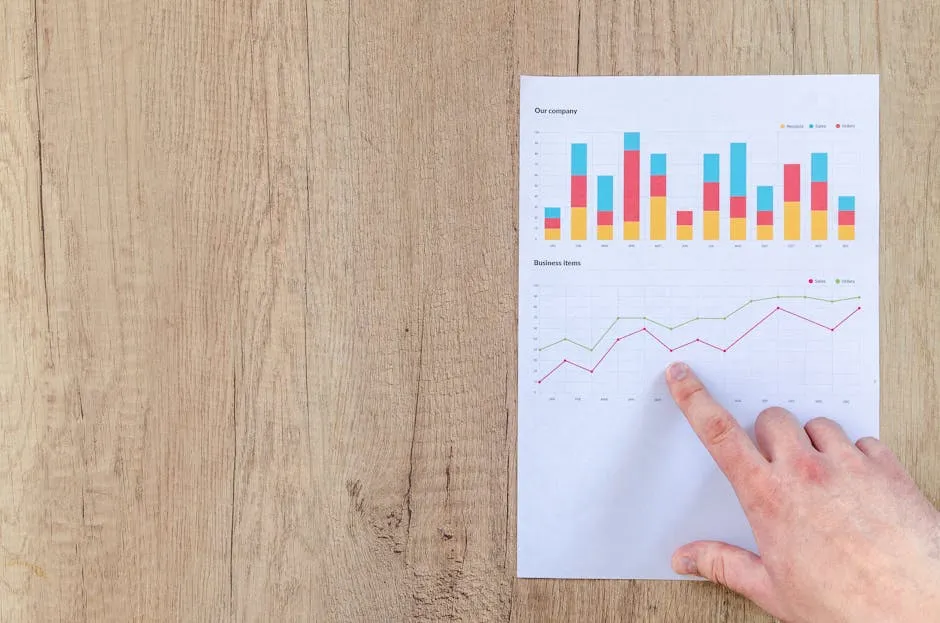Introduction
In the vast realm of economic statistics, China’s numbers often spark more raised eyebrows than cheers. At the forefront is the National Bureau of Statistics (NBS), which, despite its comprehensive data collection methods, faces criticism over transparency. This duality of praise and skepticism sets the stage for our analysis. We are here to untangle the web of China’s economic figures, comparing them against global data sources.
What do the GDP growth rates really indicate? Are the consumer price indexes a reflection of reality or just a carefully curated facade? As we sift through the data, we aim to uncover the truth behind the statistics. It’s not just about numbers; it’s about the stories they tell—or sometimes, the tales they spin.
Buckle up, dear reader. We’re about to navigate through a statistical maze where the figures can be as elusive as a cat in a room full of rocking chairs. With the NBS at the helm, we’ll look closely at the intricacies of China’s economic data and how they stack up against international benchmarks. Spoiler alert: the findings might surprise you!
Through this comparison, we’ll question whether China’s statistics are a reliable compass for global economic understanding or merely a shiny surface that obscures deeper issues. Join us on this analytical adventure, where data meets curiosity, and perhaps a dash of humor too. After all, who said economics had to be dry? Let’s dive into the numbers and see what they reveal about China’s economic landscape.

Summary of Key Points
In this section, we present a comprehensive overview of the key points discussed in the article, enticing readers to explore further:
- Understanding the NBS: The National Bureau of Statistics plays a pivotal role in shaping China’s economic narrative. We’ll introduce its function and how its data influences global economic perceptions.
- Methodological Challenges: The complexities of collecting economic data in China are not trivial. We’ll highlight the challenges posed by classification systems and historical discrepancies that can skew interpretations.
- Comparative Analysis: A side-by-side comparison of critical economic indicators, such as GDP and CPI, will reveal how the NBS’s figures measure up against those from the World Bank and IMF.
- Data Integrity and Reliability: Skepticism surrounds the accuracy of China’s statistics. We’ll discuss instances of data manipulation and systemic issues that raise questions about reliability.
- Alternative Metrics: We’ll explore alternative methods to assess China’s economic performance, including energy consumption metrics and the Li Keqiang Index, which offer different perspectives.
- Implications for Global Economics: Finally, we’ll wrap up with the implications these discrepancies have on global economic policies and investment strategies, emphasizing the need for a nuanced understanding of Chinese statistics.
By the end of this section, readers will have a clearer understanding of the landscape of Chinese economic data and its global significance. Join us as we pull back the curtain on this fascinating topic!

The National Bureau of Statistics: An Overview
The Role of the NBS
The National Bureau of Statistics (NBS) of China has a crucial role. Established in 1955, its primary purpose is to provide reliable statistical data. This data shapes China’s economic and social policies and helps the world understand China’s economy better.
So, how does the NBS gather this data? It employs a variety of methodologies. Surveys, censuses, and administrative data form the backbone of its data collection. For instance, the NBS conducts the National Economic Census every five years. This census covers all sectors, from agriculture to industry. The aim? To capture a complete picture of economic activities in the country.
What types of data does the NBS produce? Well, the NBS covers a wide range of indicators. These include Gross Domestic Product (GDP), Consumer Price Index (CPI), and employment statistics. Each of these metrics provides critical insights into the health of the economy.
The NBS also plays a vital role in international cooperation. It collaborates with organizations like the United Nations and the World Bank. These partnerships enhance the credibility of its data. When the NBS shares its findings with the global community, it fosters transparency and trust.
However, skepticism often shadows the NBS. Critics question the accuracy of its statistics. Local governments sometimes inflate numbers to meet targets. The NBS is aware of this issue and has introduced measures to mitigate it. Yet, the challenge remains. The balance between accurate reporting and local pressures is delicate.

In addition to traditional data collection, the NBS is embracing technology. With advancements in data analytics and visualization, it aims to improve how statistics are presented. This modernization can make data more accessible.
Looking to improve your understanding of data modeling? Consider grabbing “The Data Warehouse Toolkit: The Definitive Guide to Dimensional Modeling” by Ralph Kimball. This book is a must-read for anyone looking to dive deeper into data warehousing and dimensional modeling.
Recent Developments and Releases
The NBS has been busy in recent months. In October 2024, key statistical releases shed light on China’s economic landscape. Among these were updates on GDP, CPI, and employment statistics.
For instance, the GDP report highlighted a stable growth trend. This growth is attributed to positive factors accumulating in the first three quarters. Meanwhile, the CPI for September 2024 indicated a modest increase, reflecting changes in consumer behavior.

Employment statistics also showed promising signs. The labor market is gradually recovering, with job creation improving. These updates provide a snapshot of the current economic climate.
Beyond domestic releases, international cooperation remains a priority. Recent meetings with global statistical organizations emphasize this commitment. For example, the NBS signed a Memorandum of Understanding with Brazil’s IBGE. Such agreements enhance data-sharing practices and improve statistical methodologies.
These collaborations are essential for data credibility. By aligning with international standards, the NBS can enhance the reliability of its statistics. This, in turn, bolsters global confidence in Chinese economic data.
In summary, the NBS plays an essential role in collecting and disseminating data. Its recent developments reflect a commitment to transparency and accuracy. Despite challenges, the NBS continues to adapt, ensuring that it remains a valuable resource for understanding China’s economic landscape.

Comparative Analysis of Economic Indicators
Key Economic Indicators
In this section, we will compare key economic indicators from the NBS with those of global data sources such as the World Bank and the International Monetary Fund (IMF). The first of these indicators is the Gross Domestic Product (GDP).
GDP
China’s GDP growth rates have been a subject of intense scrutiny. The NBS reported a GDP growth of 6% for the first half of 2024, while the IMF predicted a more conservative 5.5%. This discrepancy raises questions about the reliability of China’s economic data. The World Bank has also expressed concerns, noting that local governments often inflate their economic performance to meet targets.
Historically, discrepancies between national and provincial GDP figures have led analysts to doubt the authenticity of reported numbers. For instance, in 2015, the NBS reported a national GDP of $10.4 trillion, which was about 7% lower than the sum of provincial reports. This pattern of inflated local figures suggests that the NBS may not have a complete picture of the economic landscape.

Consumer Price Index (CPI)
Moving on to the Consumer Price Index (CPI), the NBS reported a CPI increase of 2.5% in September 2024. In contrast, global data sources like the IMF reported a similar figure of around 2.3%. While these numbers appear close, the methodologies used to calculate CPI can differ significantly.
The NBS’s CPI calculation includes various components, such as food prices, which can be volatile. International sources often use broader baskets of goods and services, leading to different inflation readings. The nuances in these methodologies can cause confusion for analysts attempting to gauge inflation trends in China.

Producer Price Index (PPI)
The Producer Price Index (PPI) is another essential indicator. The NBS reported a PPI increase of 4% in the last quarter. This figure stands in stark contrast to the World Bank’s projection of a 3.2% increase. Such discrepancies can stem from differences in data collection methodologies. While the NBS focuses on domestic production, global organizations may consider export prices, which can vary due to international market conditions.
Methodological Differences
The differences in data collection methodologies between the NBS and global sources pose significant challenges for analysts. The NBS relies heavily on surveys and administrative reports, while international organizations often utilize a combination of surveys, satellite data, and alternative metrics.
This variation can lead to different interpretations of economic performance. For example, energy consumption metrics have become increasingly popular as alternative indicators of economic activity. Economists often look at energy consumption trends to gauge industrial output, especially in energy-intensive sectors.

The NBS has begun to incorporate such alternative metrics into its reports. This shift indicates a growing recognition of the complexities involved in accurately assessing economic performance. However, the NBS still faces criticism for not fully disclosing its methodologies, which raises questions about data integrity.
For a deeper understanding of behavioral economics, check out “Misbehaving: The Making of Behavioral Economics” by Richard H. Thaler. This book dives into the quirks of human behavior and its implications for economics.
In conclusion, the comparative analysis of economic indicators reveals significant discrepancies between the NBS and global data sources. While the NBS provides valuable insights into China’s economy, the differences in methodologies and potential data manipulation must be considered. Analysts must navigate this complex landscape to derive meaningful conclusions about China’s economic performance.

The Skepticism Surrounding Chinese Statistics
Historical Context of Data Credibility
China’s statistical credibility has seen better days. A notorious chapter in this saga is the “wind of falsification.” This term describes a period where data manipulation became almost an art form. Local governments were under immense pressure to meet targets. So, what did they do? They inflated numbers. Shocking, right? This practice raised eyebrows and left researchers questioning the integrity of the statistics.
In 1998, the Chinese government launched reforms to improve data accuracy. Yet, the shadows of these historical inaccuracies linger. For instance, the GDP figures often raise suspicion. Critics have pointed out discrepancies between national and provincial data. When national GDP is lower than the sum of provincial reports, you know something’s fishy.

But it’s not just about the past. The credibility of data from the National Bureau of Statistics (NBS) remains a hot topic. Researchers frequently point out that local leaders might jazz up figures to avoid unfavorable evaluations. This pressure creates a culture of embellishment. The result? A statistical landscape that’s more foggy than clear.
Current Challenges
Fast forward to today, and the challenges persist. Local government reporting practices are still a concern. The NBS tries to enforce accuracy, but local authorities sometimes have their own agenda. Imagine a situation where your boss expects you to hit a target. How do you respond? Some local leaders choose to stretch the truth.

Additionally, the NBS faces hurdles in data collection methodologies. While they’ve made strides, the complexity of the Chinese economy complicates data gathering. With a mix of state-owned and private enterprises, determining accurate statistics becomes a daunting task.
Transparency is another sticking point. The Chinese government’s reluctance to fully disclose data collection methods raises eyebrows. This lack of clarity can make even the most enthusiastic data analyst feel like they’re trying to find a needle in a haystack. The NBS has made efforts to improve data quality, but skepticism remains.

Comparative Reliability
So how do China’s statistics stack up against those of other developing nations? Surprisingly well, in some respects. The World Bank even classifies China as a middle-income country with a decent statistical capacity score. This means that, compared to many developing counterparts, China has improved its data collection and reporting practices.
Yet, this doesn’t mean China’s numbers are infallible. Some experts argue that while the NBS has made progress, the complexity of China’s transition to a market economy presents ongoing issues. Take the GDP figures, for instance. The method of calculating GDP has evolved, but the accuracy of those figures remains debated.

When comparing with other developing countries, China’s statistics may not be as unreliable as some might think, but they still face scrutiny. For example, countries with less developed statistical systems often present figures that can be wildly inaccurate. Still, just because China performs better than some doesn’t mean it should rest on its laurels. The journey toward data integrity is ongoing.
In conclusion, the skepticism surrounding Chinese statistics is deeply rooted in history and compounded by current practices. While there’s been progress, the shadows of past inaccuracies and current challenges loom large. As the NBS continues its quest for credibility, the world watches with a mix of curiosity and skepticism. Will they succeed in shining a light on the truth? Only time will tell.

Alternative Methods of Measuring Economic Performance
Introduction to Alternative Metrics
With skepticism surrounding official statistics, alternative metrics have gained traction. These methods provide fresh perspectives on China’s economic performance. Two notable metrics include energy consumption and the Li Keqiang Index. These alternatives serve as barometers for China’s economic health, offering insights that official numbers might gloss over.
Energy consumption is particularly telling. As a manufacturing powerhouse, fluctuations in energy use often correlate with output. When energy consumption dips, economists start to raise their eyebrows. Is the economy slowing down, or is it just a seasonal fluctuation?

The Li Keqiang Index, named after China’s then Vice Premier, is another interesting alternative. This index relies on electricity production, rail cargo shipments, and loan disbursements. It has garnered attention for aligning closely with changes in official GDP statistics. In essence, it acts as a reality check for the often-rosy official numbers.
Case Studies
Let’s look at some case studies. The Li Keqiang Index has shown significant promise. Researchers found it to be a reliable indicator of economic activity. When the index suggests downturns, it often aligns with dips in reported GDP growth. This correlation provides a compelling argument for using alternative metrics to gauge economic performance.
Now consider energy consumption data. In 2023, a notable decrease in energy usage was reported. This decline raised concerns about an economic slowdown, which became evident when official GDP reports didn’t reflect the same level of growth. The discrepancy between energy consumption and GDP growth figures sparked discussions about the accuracy of the data.
These alternative methods not only challenge the NBS’s official statistics but also offer valuable insights for policymakers and investors. By incorporating these metrics, stakeholders can gain a more nuanced understanding of China’s economic landscape. As the conversation around data integrity continues, these alternatives provide a much-needed reality check.
Implications of Alternative Data
Relying on alternative data can seriously shake up investment decisions and economic forecasting. Why? Because traditional statistics sometimes miss the mark, particularly in a complex economy like China’s. Investors often crave insights beyond the glossy official reports from the National Bureau of Statistics (NBS). They want to know the real story behind the numbers.
For instance, consider energy consumption. It’s a straightforward metric that often mirrors economic activity. A dip in energy use could signal an economic slowdown, even if the NBS touts stable GDP growth. Investors who ignore these signs might find themselves caught off guard.
Then there’s the Li Keqiang Index. This index, built on electricity production, railway cargo shipments, and loan disbursements, has proven to be a more reliable indicator of economic performance than the NBS’s GDP figures. When these alternative metrics indicate contraction, savvy investors might adjust their strategies accordingly.
Moreover, using a mix of both official and alternative data sources allows for more robust economic forecasting. This dual approach can help investors spot trends and potential market shifts that might otherwise go unnoticed. It’s like having a GPS and a map; together, they provide a clearer path forward.
In essence, relying solely on NBS data can lead to misguided decisions. Investors should embrace the full spectrum of data—official and alternative—to make informed choices. This strategy not only enhances understanding but also sharpens competitive edge in a fluctuating market.
Conclusion
This article reveals the intricate landscape of China’s economic statistics. The findings underscore the importance of grasping the complexities behind the numbers. The National Bureau of Statistics (NBS) plays a pivotal role in shaping China’s economic narrative. However, its credibility often faces skepticism. This skepticism stems from historical inaccuracies and ongoing issues related to data transparency and integrity.
Understanding these dynamics is crucial for anyone looking to navigate the Chinese economy. The reliance on official statistics can be misleading. These figures may not always reflect ground realities. Thus, stakeholders must consider alternative data sources to gain a comprehensive view. By blending traditional metrics with alternative insights, one can better grasp the true state of China’s economy.
Moreover, the call for greater transparency in data reporting remains paramount. Stakeholders, from investors to policymakers, should advocate for enhanced data integrity. This transparency will foster trust and improve decision-making across sectors.
In conclusion, as we navigate China’s economic landscape, we must remain vigilant. The interplay between official statistics and alternative metrics shapes our understanding of this vast economy. By acknowledging the nuances and complexities of the data, we can better anticipate trends and make informed decisions. The road ahead may be challenging, but with the right data at hand, the potential for insight and growth is significant.
FAQs
What is the National Bureau of Statistics?
The National Bureau of Statistics (NBS) is China’s primary body responsible for collecting and disseminating statistical data. It plays a vital role in shaping economic policy and offers insights into the nation’s economic and social conditions. From GDP to employment figures, the NBS provides essential data that influences both domestic and international perspectives on China’s economy.
Why is there skepticism surrounding Chinese statistics?
Skepticism around Chinese statistics arises from a historical context marked by data manipulation and inaccuracies. Local governments often face pressure to meet economic targets, leading to inflated figures. This has resulted in a lack of trust in the NBS’s reports, as discrepancies between national and provincial data raise questions about the integrity of the statistics.
How do alternative metrics provide insights into China’s economy?
Alternative metrics, such as energy consumption and the Li Keqiang Index, offer valuable insights that complement official statistics. These methods can reveal economic trends that the NBS data may overlook. For example, energy consumption often reflects industrial activity, providing a more real-time perspective on economic health.
What are the implications of relying solely on NBS data?
Relying solely on NBS data poses risks for investors and policymakers. It may lead to misguided decisions based on potentially inflated statistics. By ignoring alternative data sources, stakeholders could miss critical signals of economic shifts, ultimately impacting their strategies and outcomes. Thus, incorporating a variety of data sources is crucial for informed decision-making.
Please let us know what you think about our content by leaving a comment down below!
Thank you for reading till here 🙂
For a comprehensive understanding of the role of the Kenya National Bureau of Statistics, check out this guide.
To delve deeper into the employment statistics from Clay County, visit this resource.
For insights on comparing economic indicators in different regions, refer to this analysis.
All images from Pexels




